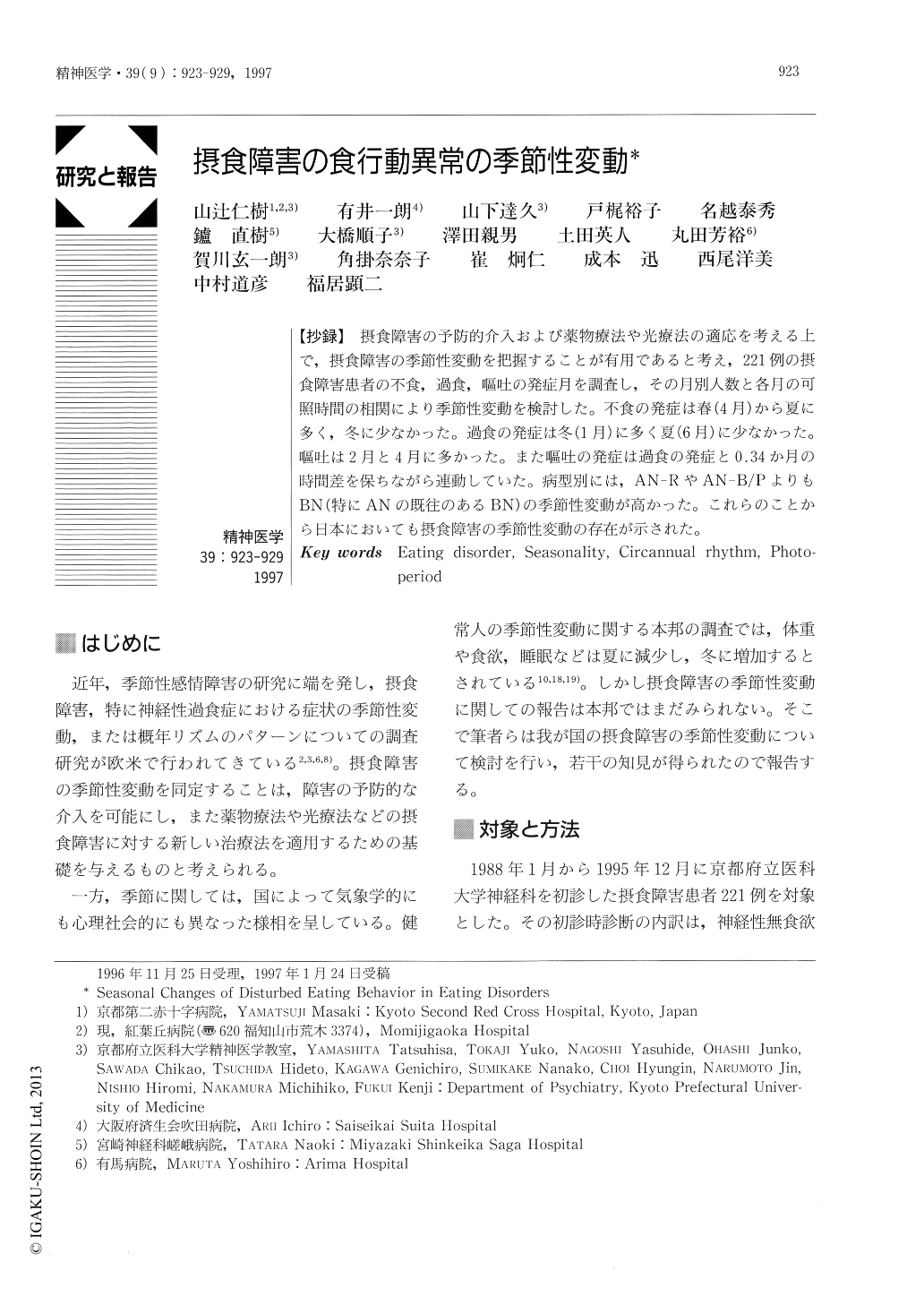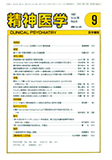Japanese
English
- 有料閲覧
- Abstract 文献概要
- 1ページ目 Look Inside
【抄録】摂食障害の予防的介入および薬物療法や光療法の適応を考える上で,摂食障害の季節性変動を把握することが有用であると考え,221例の摂食障害患者の不食,過食,嘔吐の発症月を調査し,その月別人数と各月の可照時間の相関により季節性変動を検討した。不食の発症は春(4月)から夏に多く,冬に少なかった。過食の発症は冬(1月)に多く夏(6月)に少なかった。嘔吐は2月と4月に多かった。また嘔吐の発症は過食の発症と0.34か月の時間差を保ちながら連動していた。病型別には,AN-RやAN-B/PよりもBN(特にANの既往のあるBN)の季節性変動が高かった。これらのことから日本においても摂食障害の季節性変動の存在が示された。
Elucidation of the seasonal patterns of eating disorders may be useful in preventing eating disorders and predicting the patient's response to medication or light therapy. We examined the month of onset of disturbed eating behavior, that is, anorexia, binge-eating or vomiting in 221 outpatients with eating disorders. For statistical analysis, we used Pearson's correlation coefficient between the photoperiod and the number of patients with onset of disturbed eating behavior in a given month. The number of patients with onset of anorexia increased from spring to summer, with a peak in April, and decreased in winter. The number of patients with onset of binge-eating increased in winter, with a peak in January, and decreased in summer, with the minimum in June. There were two peaks of onset of vomiting, in February and April. The onset of vomiting was linked, despite a time lag, with the onset of binge-eating. The seasonality of anorexia was more prominent in anorexia nervosa (binge-eating/purging type) and bulimia nervosa than in anorexia nervosa (restricting type). The seasonality of binge-eating was most prominent in bulimia nervosa, especially in patients who had a history of anorexia nervosa. Thus, there was a difference in the seasonality according to the subtype of eating disorder. These findings suggest that onset of disturbed eating behavior in eating disorders is related to photoperiod and there would be a seasonal pattern in eating disorders in Japan.

Copyright © 1997, Igaku-Shoin Ltd. All rights reserved.


